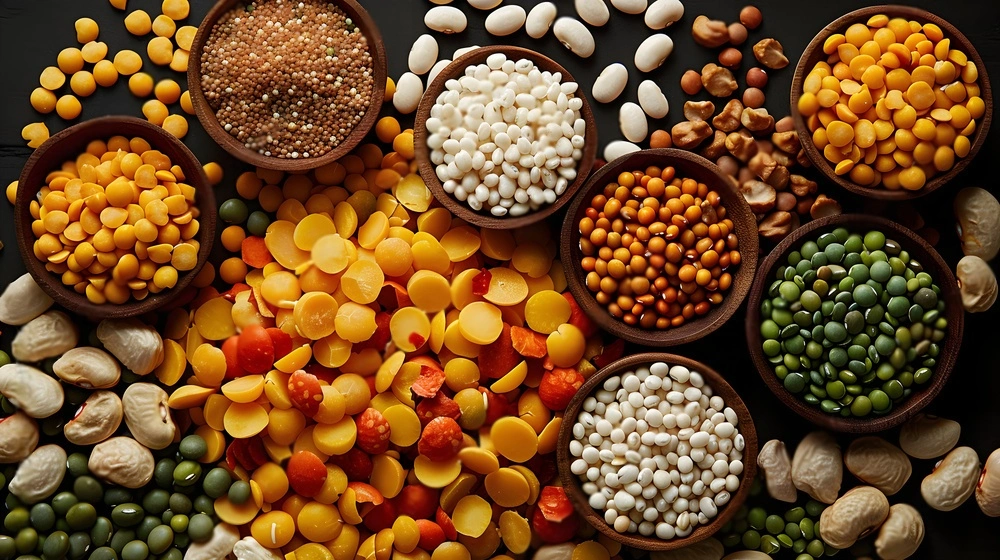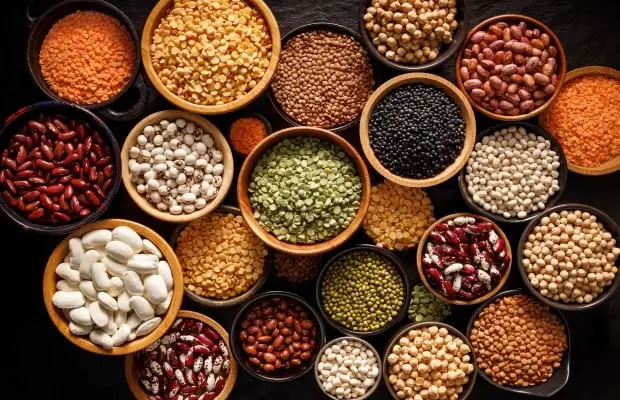Pulses have been a cornerstone of Indian agriculture for centuries. Known for their nutritional value and role in soil fertility, pulses are essential for both human consumption and sustainable farming practices. Pulses Exporters in India They are a major source of protein for millions of people in India and around the world.
Pulses play a vital role in global food security. As a major source of protein, they are crucial for dietary needs, especially in developing countries. Their ability to fix nitrogen in the soil also makes them important for sustainable agriculture, reducing the need for chemical fertilizers.
India is one of the largest producers and exporters of pulses globally. The pulse export industry has seen significant growth over the years, driven by increasing global demand and the adoption of advanced agricultural practices. Indian pulses are known for their quality, variety, and nutritional benefits, making them a preferred choice in many countries.

While major pulses dominate the export market, there are several minor pulses like moth beans, horse gram, and cowpeas that have significant export potential. These pulses are gaining popularity for their unique flavors and health benefits.
India is home to numerous pulse exporters who play a crucial role in meeting global demand. These exporters ensure the supply of high-quality pulses by adhering to stringent quality standards and adopting best practices in farming and processing.
Pulses thrive in specific climatic conditions. They require well-drained soil, adequate rainfall, and moderate temperatures. The climatic conditions in India are well-suited for the cultivation of various pulses, contributing to the country’s leading position in pulse production.
Several regions in India specialize in pulse production. The states of Madhya Pradesh, Uttar Pradesh, Rajasthan, Maharashtra, and Karnataka are known for their significant contribution to the country’s pulse output. These regions have favorable climatic conditions and soil types that support pulse farming.
Modern farming techniques have revolutionized pulse cultivation in India. The adoption of precision farming, use of high-yield varieties, and implementation of integrated pest management practices have significantly increased productivity and quality.
Government policies and support play a crucial role in promoting pulse cultivation. Initiatives like the National Food Security Mission (NFSM) and various subsidy programs for farmers have encouraged pulse production and helped stabilize prices in the market.

Quality is paramount in the pulse export industry. International buyers demand high-quality products that meet specific standards. Ensuring quality helps maintain India’s reputation as a reliable supplier and opens up new market opportunities.
Several certification bodies and standards ensure the quality of pulses exported from India. These include the Food Safety and Standards Authority of India (FSSAI), ISO certifications, and various organic certification bodies. Adhering to these standards is essential for accessing international markets.
Inspection and quality control processes are integral to pulse exporting. These processes include testing for moisture content, purity, and absence of contaminants. Exporters also conduct regular audits to ensure compliance with international standards.
Exporting pulses requires extensive documentation. This includes the Certificate of Origin, Phytosanitary Certificate, commercial invoice, packing list, and Bill of Lading. Proper documentation ensures smooth customs clearance and adherence to regulatory requirements.
The export process involves several steps, including obtaining necessary licenses, adhering to export regulations, and ensuring compliance with importing countries’ standards. Exporters must stay updated with the latest regulations to avoid any disruptions.
Exporting pulses comes with its own set of challenges. These include fluctuating market prices, stringent quality standards, and logistical issues. Exporters must navigate these challenges to maintain their competitiveness in the global market.
Several countries import pulses from India. Major importers include the United States, Canada, the United Arab Emirates, Saudi Arabia, and European countries. These countries have a high demand for quality pulses due to their nutritional benefits and culinary uses.
The global demand for pulses is on the rise, driven by increasing awareness of their health benefits and the growing trend of plant-based diets. Supply trends indicate a steady increase in production to meet this demand, with India playing a key role as a major supplier.
Trade agreements and tariffs significantly impact the pulse export market. Bilateral and multilateral trade agreements can facilitate smoother trade flows, while tariffs and trade barriers can pose challenges. Staying informed about these factors is crucial for exporters.

Pulses are a powerhouse of nutrition. They are rich in protein, dietary fiber, vitamins, and minerals. Including pulses in the diet can help meet nutritional requirements and promote overall health.
Consuming pulses offers numerous health benefits. They aid in weight management, improve digestion, and help regulate blood sugar levels. Pulses are also beneficial for heart health and can reduce the risk of chronic diseases.
Pulses are an integral part of diets across the world. They are used in a variety of dishes, from soups and salads to main courses and snacks. Their versatility and nutritional value make them a staple in many cuisines.

Climate change poses a significant challenge to pulse production. Changes in weather patterns, increased frequency of extreme weather events, and rising temperatures can affect crop yields and quality. Adaptation strategies and resilient farming practices are essential to mitigate these impacts.
Pest and disease management is crucial for maintaining the quality and yield of pulses. Integrated pest management practices, use of resistant varieties, and timely interventions are necessary to protect crops from pests and diseases.
The pulse export market is highly competitive. Exporters must differentiate their products through quality, innovation, and customer service to stay ahead in the market. Understanding market dynamics and consumer preferences is key to maintaining competitiveness.
There are numerous success stories in the pulse export industry. Companies that have successfully navigated challenges and leveraged opportunities serve as inspiration for others. These success stories highlight the importance of strategic planning, innovation, and adaptability.
Innovation plays a crucial role in the pulse export industry. From adopting advanced farming techniques to implementing state-of-the-art processing technologies, innovation helps improve productivity, quality, and competitiveness.
The pulse market is evolving, with several emerging trends shaping its future. These include the growing popularity of plant-based diets, increasing demand for organic pulses, and advancements in pulse processing and packaging technologies.
Technological advancements are transforming the pulse export industry. Precision farming, blockchain for supply chain transparency, and advanced processing equipment are some of the technologies driving efficiency and quality.
There are several potential growth areas in the pulse export market. Exploring new markets, developing value-added products, and focusing on sustainability are key strategies for future growth.
Interviews with industry experts provide valuable insights into the pulse export market. Experts share their perspectives on market trends, challenges, and opportunities, offering valuable guidance for exporters.
Industry experts offer predictions and recommendations for the future of the pulse export market. Their insights help exporters make informed decisions and strategize for long-term success.
The pulse export industry in India is thriving, driven by the increasing global demand for high-quality pulses. Major pulses like chickpeas, lentils, pigeon peas, green gram, and black gram are at the forefront of this growth. Leading exporters, including Ashapura Exporters, play a crucial role in meeting this demand.
The future of the pulse export industry looks promising, with several emerging trends and technological advancements driving growth. However, exporters must navigate challenges like climate change, pest management, and market competition to sustain their success.
For further information and to explore business opportunities in the pulse export market, industry stakeholders are encouraged to stay informed about market trends, invest in quality and innovation, and build strong relationships with international buyers.



